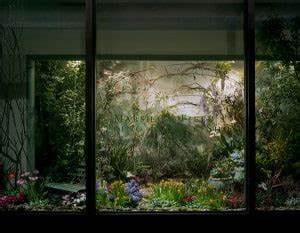
Vertical Gardens: Exploring the Green Paradigm
Introduction
Vertical gardens have gained immense popularity worldwide as an innovative and sustainable solution to urban greening. These living walls not only enhance the aesthetic appeal of buildings but also provide numerous environmental benefits. From reducing air pollution to improving biodiversity, vertical gardens have captured the attention of architects, designers, and nature enthusiasts alike. In this article, we will delve into the fascinating world of vertical gardens, exploring their historical background, key concepts, famous examples, current trends, challenges, and future prospects.
Historical Background
The concept of vertical gardens dates back centuries, with the ancient Hanging Gardens of Babylon considered one of the earliest examples. These remarkable gardens featured lush vegetation cascading down the sides of terraces, creating a natural oasis in the heart of a bustling city. Throughout history, various civilizations incorporated vertical gardens into their architectural designs, from the terraced gardens of Machu Picchu to the medieval hanging gardens of Europe. These early examples laid the foundation for the development of vertical gardens as we know them today.
Key Concepts and Definitions
Vertical gardens, also known as green walls or living walls, are innovative structures that allow plants to grow vertically on a building’s facade or interior walls. These gardens utilize various techniques, such as hydroponics, to provide plants with the necessary nutrients and support. Key terms related to vertical gardens, such as green walls and hydroponics, are integral to understanding the principles behind these intricate structures. As we delve deeper into the topic, we will clarify any technical jargon encountered throughout this article.

Main Discussion Points
Famous Vertical Gardens in Europe
Europe is home to several iconic vertical gardens, each with its unique characteristics. The Musée du Quai Branly in Paris stands out as a testament to the harmonious fusion of nature and architecture. Its vertical garden, designed by Patrick Blanc, mesmerizes visitors with a vibrant tapestry of over 15,000 plants. This living artwork not only enhances the museum’s aesthetic appeal but also serves as an urban oasis, purifying the surrounding air and providing a habitat for local wildlife.
Famous Vertical Gardens in Asia
Asian countries have embraced vertical gardens, infusing their rich cultural heritage into their designs. The Gardens by the Bay in Singapore is a prime example of Asia’s commitment to sustainable urban development. These futuristic gardens house towering Supertrees that serve as vertical gardens, showcasing an exquisite blend of technology and nature. The integration of photovoltaic cells within these Supertrees generates solar energy, highlighting Asia’s innovative approach to vertical gardening.
Famous Vertical Gardens in North America
North America showcases exceptional vertical gardens that have made significant contributions to urban revitalization and sustainable development. One Central Park in Sydney, Australia, designed by Jean Nouvel, is a prime example of a green oasis in an urban setting. Its vertical gardens, adorned with a diverse array of plants, offer a refreshing and environmentally friendly solution to the concrete jungle. Moreover, such projects contribute to social and economic benefits, attracting tourists and boosting local businesses.

Case Studies or Examples
Real-world examples provide valuable insights into the design, implementation, and maintenance strategies employed in successful vertical gardens. The Tree House in Singapore is a pioneering project that demonstrates the transformative power of vertical gardens. This sustainable residential development incorporates lush green walls that not only enhance the residents’ quality of life but also mitigate the urban heat island effect and improve air quality.
Current Trends or Developments
Vertical gardening continues to evolve, keeping pace with technological advancements and the growing demand for green spaces. Modular systems have gained popularity due to their flexibility and ease of installation. Additionally, automated irrigation systems help maintain the health and vitality of plants, ensuring their longevity. Moreover, vertical gardens are no longer limited to commercial or public spaces; they are increasingly being incorporated into residential buildings, promoting sustainable living.
Challenges or Controversies
While vertical gardens offer numerous benefits, they are not without challenges. High initial costs and maintenance requirements can pose financial burdens for some individuals and organizations. Moreover, controversies surround the ecological impact of vertical gardens, with concerns about their long-term sustainability and resource consumption. However, differing viewpoints exist on these matters, highlighting the need for comprehensive research and a holistic approach to vertical gardening.

Future Outlook
The future looks promising for vertical gardens, with the potential for widespread adoption and growth. As technology continues to advance, we can expect innovative solutions that enhance the efficiency and effectiveness of vertical gardening. Collaboration between countries will play a crucial role in sharing knowledge and experiences, further advancing the field of vertical gardening. With the increasing awareness of sustainability and environmental preservation, vertical gardens hold tremendous potential in shaping the cities of tomorrow.
Conclusion
In conclusion, vertical gardens have emerged as a captivating solution to urban greening, capturing the imagination of people around the world. From their historical origins to the current trends and challenges, vertical gardens offer a unique way to integrate nature into our built environments. The famous examples discussed in this article highlight the cultural, social, and environmental significance of vertical gardens in different countries. As the world embraces sustainable living, vertical gardens will undoubtedly play a vital role in creating greener and more resilient cities.
References
Blanc, P. (2008). The Vertical Garden: From Nature to the City. W. W. Norton & Company.
Hoyle, N. (2012). Vertical Gardens: Gardens That Reach for the Sky. Loft Publications.
Puyana, M. (2011). The Vertical Garden: From Nature to the City. WW Norton & Company.
Pourdeyhimi, S. (2015). Vertical Gardening: Grow Up, Not Out, for More Vegetables and Flowers in Much Less Space. Cool Springs Press.




